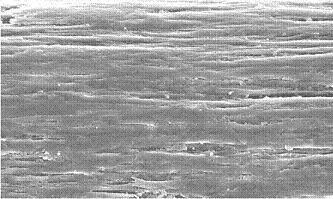US researchers have developed what they say is a uniquely precise technique for monitoring the effect of different hair treatments.
US researchers have developed what they say is a uniquely precise technique for monitoring the effect of different hair treatments.
Using atomic force microscopy to examine frizzy hair was not in Ohio State University nanotribologist Bharat Bhushan’s usual remit. Nanotribology is the study of friction between moving parts in microelectronics.

A lecture Bhushan gave to Procter & Gamble scientists changed all that, when he realised friction was a major issue for hair. He discovered that everyday activities like washing, combing, brushing and drying causes friction between hairs and between other objects and ultimately damaged the hair.
This was something that wasn’t out of the realm of his experience. ’We realised that beauty care was an emerging area for us and we should dive in,’ he said.
Bhushan and colleagues used atomic force microscopy to examine hairs while they scratched the surface of those hairs and probed inside the hair shaft with a very small needle.
They discovered that hair conditioners do not evenly cover the whole hair shaft. However, a conditioner with additives that P&G had just formulated did cover the hair shaft evenly, reports Bhushan and colleagues at P&G and Ohio State University. Bhushan says that from these first very precise measurements of the hair shaft new products could be designed to work by treating hair from the inside out. The atomic force microscopy techniques could also be used to develop longer-lasting nail polishes and lipsticks, he suggests. Fiona Salvage
References
G Wei, B Bhushan and P M Torgerson, oi:10.1016/j.ultramic.2005.06.033)






No comments yet